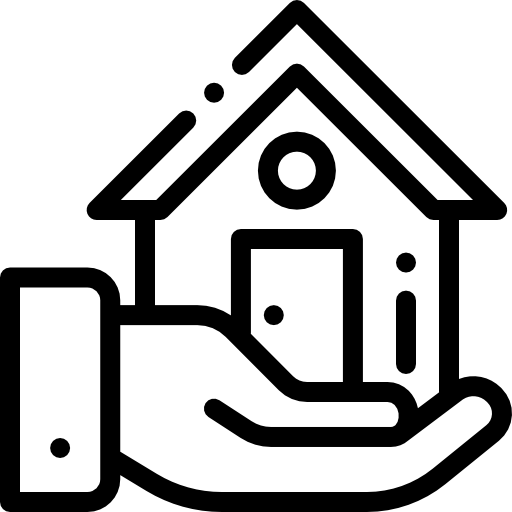An indoor mapping solution creates a digital twin of any enclosed space. It captures walls, rooms, corridors, and utility routes with millimeter accuracy. Once mapped, the environment becomes an interactive canvas.
Mobile apps, kiosks, and web portals render this canvas in 2D or 3D. Users enjoy real-time location, navigation prompts, and contextual data layers.
Behind the scenes, facility managers and IT teams tap into precise spatial intelligence to optimize operations, improve safety, and boost customer satisfaction. This blog post explains its core benefits, real-world use cases, and the tech that powers these systems.
Why Indoor Mapping Matters
Modern buildings are complex. Large campuses, shopping centers, hospitals, and warehouses span multiple floors, wings, and service zones. Static paper plans and generic GPS fall short indoors. A purpose-built spatial framework solves three core challenges:
- Visibility: Stakeholders see exactly where people and assets are.
- Guidance: Visitors move efficiently with turn-by-turn prompts.
- Insights: Foot-traffic patterns and dwell times drive better decisions.
This level of detail powers smarter workflows and elevates user experiences across sectors.
Key Benefits of Indoor Mapping Solutions
1. Streamlined Operations
- Maintenance crews locate faulty equipment instantly.
- Cleaning teams follow optimized routes.
- Businesses that deploy an indoor wayfinding solution report up to 30 percent faster task completion.
2. Enhanced Visitor Experience
- Shoppers find stores and restrooms without assistance.
- Conference attendees reach sessions on time.
By integrating indoor mapping for business data into loyalty apps, retailers can send location-based offers that boost engagement.
3. Safety & Compliance
- Emergency responders view live locations of staff and guests.
- Geofencing alerts flag unauthorized access to high-risk zones.
Detailed evacuation drills and audit logs simplify regulatory reporting and training.
4. Data-Driven Space Optimization
- Heatmaps reveal congestion points and underused areas.
- Dwell-time analytics guide layout redesigns.
Investing in spatial analytics often yields a measurable return on square footage spent.
Real-World Use Cases of Indoor Wayfinding Solutions
Retail & Shopping Centers
Customers open a branded app, input a product name, and follow the fastest route. Proximity triggers send personalized coupons when they pass key aisles. This level of engagement is a hallmark of modern indoor wayfinding solution offerings.
Healthcare Facilities
Nurses scan patient wristbands to confirm room assignments. Technicians track portable diagnostic devices across wards. Family members use wayfinding prompts to find cafeterias, labs, and billing desks without stress.
Corporate Campuses
- Employees book conference rooms and see step-by-step directions from their desks.
- Visitors follow self-guided tours, securely passing through badge-enabled doors.
Integrating calendar feeds with spatial overlays creates a frictionless office.
Airports & Transit Hubs
Passengers check terminal maps on their phones, track gate changes, and receive boarding alerts. Multilingual prompts and service-zone highlights reduce anxiety, especially in sprawling international terminals.
Warehouses & Manufacturing
- Order pickers use handheld scanners that display optimized pick paths.
- AGVs navigate mapped corridors seamlessly.
Operations managers monitor back-of-house traffic, pinpointing bottlenecks and boosting throughput with indoor mapping for business workflows.
Core Technology Components of Indoor Wayfinding Solutions
- Data Acquisition: Laser scanners, LiDAR, and photogrammetry generate precise floor plans and 3D point clouds. CAD or BIM imports speed up initial onboarding.
- Positioning & Tracking: BLE beacons, UWB anchors, Wi-Fi RTT, and inertial sensors combine to deliver sub-meter accuracy. Hybrid fusion algorithms correct drift and fill coverage gaps.
- Map Rendering & Delivery: Cloud platforms tile 2D and 3D maps. REST APIs and WebSocket feeds serve location updates to native mobile SDKs and web clients.
- Analytics & Machine Learning: Traffic-prediction models anticipate peak flows. AI-driven insights recommend layout tweaks and staffing adjustments.
- Integration Layer: Standard formats like GeoJSON and IndoorGML ensure compatibility with ERP, CRM, BMS, and IoT dashboards. Webhooks and event streams automate alerts and workflows.
How to Implement Indoor Mapping Solutions For Business
- Start with a pilot in a confined area. Validate positioning accuracy and user feedback.
- Define precision targets: room-level, sub-2 m, or aisle-level. Match hardware and software accordingly.
- Plan beacon and anchor placement in open sight lines. Avoid metal obstructions.
- Leverage existing CAD or BIM assets to accelerate model creation.
- Secure data at rest and in transit. Encrypt location logs and maintain audit trails.
- Train staff on the mobile or kiosk interfaces. Monitor adoption rates and iterate on UX.
- Expand gradually, adding features like AR overlays or voice guidance as users grow comfortable.
A phased approach reduces risk and keeps budgets on track while rolling out an indoor wayfinding solution.
Conclusion
Digital spatial intelligence reshapes how organizations manage their interiors. It turns complex layouts into intuitive, interactive maps. From faster maintenance to richer visitor journeys, the benefits are clear.
For businesses in Dubai seeking turnkey indoor mapping for business services or a full-featured indoor wayfinding solution, Limina Studios delivers end-to-end expertise. We handle site surveys, hardware deployment, software integration, and ongoing support. Partner with Limina Studios in Dubai to transform your indoor spaces into efficient, data-driven environments today.























